
Greece to Spend 780 Million Euros to Protect Marine Biodiversity
, said a government official, speaking on condition of anonymity.The European Union's Copernicus Climate Change Service said last month that ocean temperatures hit a record high in February, in a dataset that goes back to 1979. Overfishing and plastic pollution are also major threats to oceans.Plastics entering the world's oceans could nearly triple by 2040 if no further action is taken, research has shown.Greece wants to reduce plastic litter in the water by 50% and microplastics by 30% by 2030, the government official said.The Greek marine parks, whose boundaries will be defined after scientific
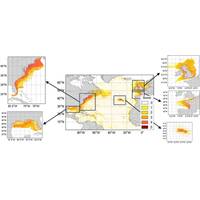
High-Risk Litter Zones Threaten North Atlantic Wildlife
in the dataset of river plastic emissions used in the study, was noted as a significant input to HRZs across both sides of the Atlantic.The marine megafauna most at risk were shown to be seabirds, cetaceans (whales, dolphins and porpoises), turtles and elasmobranchs (sharks, rays, skates). Sheet-like plastics such as plastic bags and food wrappers were the most commonly ingested type of land-derived plastic litter for most marine megafauna, except seabirds which were generally more at risk of ingesting hard plastic fragments.The habitats most at risk were mangroves and coral reefs, both of which are
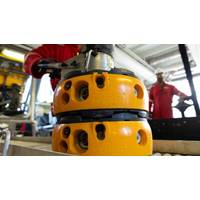
TGS Wraps Up 410-Day OBN Survey Campaign Offshore Guyana
from ExxonMobil Wells. The COTW program acknowledges outstanding achievements related to health, safety and the environment across all of ExxonMobil Wells’ operations worldwide. TGS also recovered 1.2 metric tons of marine debris, removing a large amount of discarded fishing gear, plastics and other harmful debris from the marine environment in Guyana
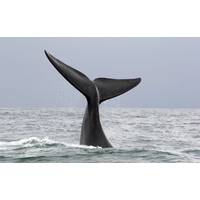
Breathing New Life Into Fight to Save the Seas with Artificial Intelligence
policy – for example, on minimum recycled content or a packaging consumption tax – across multiple parameters, such as recycling collection rates and waste trade flows.Crucially, negotiators can model the impact of multiple interventions to assess how they intersect with each other to reduce plastics waste while taking account of factors such as population growth and trade flows. Encouragingly, their modelled policy interventions show that plastics waste could be cut to zero. The researchers say they couldn’t have built the tool without AI. “The thing that we wanted to avoid was
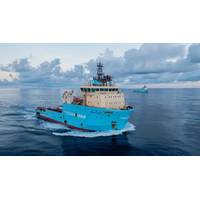
Maersk and The Ocean Cleanup Forge Ahead in Plastic Capture
the point we are ready for scale-up, with the additional donation from the A.P. Moller Foundation being a welcome contribution to our 2024 mission.”Robert M. Uggla, CEO of A.P. Moller Holding and Chair of A.P. Moller – Maersk: “The Ocean Cleanup holds an important mission to remove plastics from the oceans, one of the biggest environmental challenges of our time. Today, plastic pollution impacts hundreds of marine species, and it contaminates the marine food chain with toxic pollutants. With this in mind, Maersk Supply Service, A.P. Moller – Maersk and the A.P. Moller Foundation
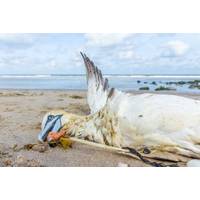
Plastic Pollution Threatens Birds Far Out at Sea
. Research from 2014 found that more than 60% of flesh-footed shearwater fledglings surpass international targets for plastic ingestion by seabirds. Worryingly, 16% of fledglings failed these targets after just one feeding.Over time, plastic debris also breaks down into minuscule fragments called microplastics. Research has found that microplastic exposure can cause inflammation in a bird’s digestive system – a phenomenon called “plasticosis”.We didn’t focus on the impact of plastic exposure on the petrel species studied, but many of these species are already threatened with
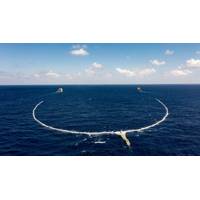
Airbnb Co-founder Donates $25 Million to The Ocean Cleanup
technology has intercepted over 2 million kilograms (almost 4.5 million pounds) of trash in rivers, keeping it out of our oceans for good.Joe Gebbia, Co-founder of Airbnb and Samara and Chairman of Airbnb.org“I’m proud to partner with The Ocean Cleanup in their crucial work to remove harmful plastics from our oceans,” shared Gebbia. “The Ocean Cleanup has created systems and technology that actually work at scale. In order for them to deploy across our oceans and rivers, they now need to scale their funding. It is my hope that this donation can inspire others to act.”Gebbia&rsquo

How AI Can Help Protect the Oceans
programs became available. How does it work? Essentially, photos taken by European Space Agency satellites are scanned by AI to spot hidden plastic dumps. Then we refine it over time, to see if these sites are getting bigger – and if they’re close to rivers or lakes, which could carry plastics into the seas and add to the millions of tonnes of turtle-choking, fish-killing plastics already swilling around.The goal is to find the sites at highest risk of adding to ocean plastics. Once we know this, enforcement agencies in each of the 112 countries we’ve mapped can respond to the most

Lander Lab #3: Buoyancy
. For example: Fiberglass (FRP) has a specific gravity of 1.7, whereas aluminum is 2.7. Steel is about 8. Lead is 11.3. Marine grade HDPE is 0.96, which means it floats. We don’t use HDPE for flotation, but it subtracts zero from the buoyancy budget. Most plastics are not prone to corrosion, though some are hygroscopic and absorb some percentage of water over time. A great reference is Steven Dexter’s text, “Handbook of Oceanographic Engineering Materials”. An earlier copy is available for free through WHOI.Design tip:



 February 2024
February 2024





